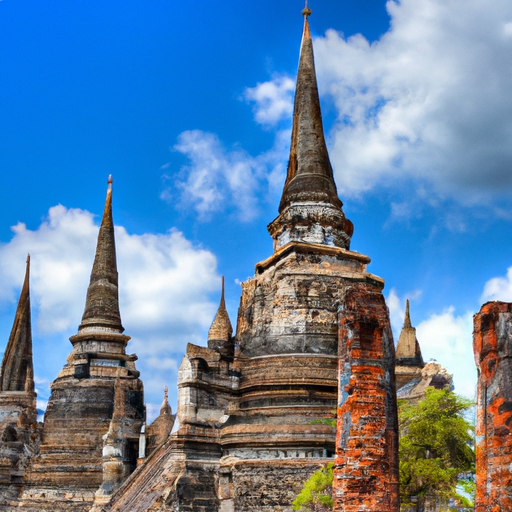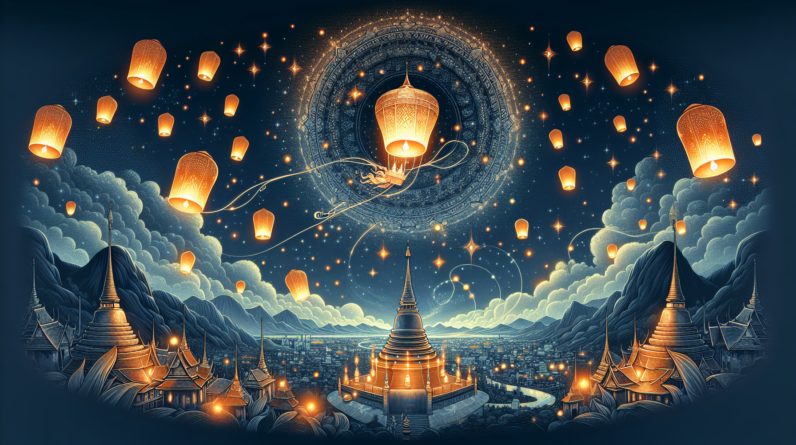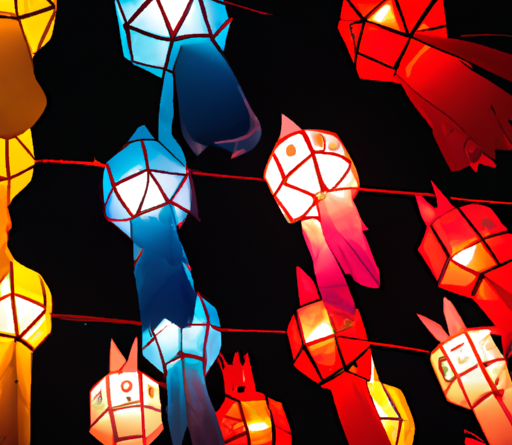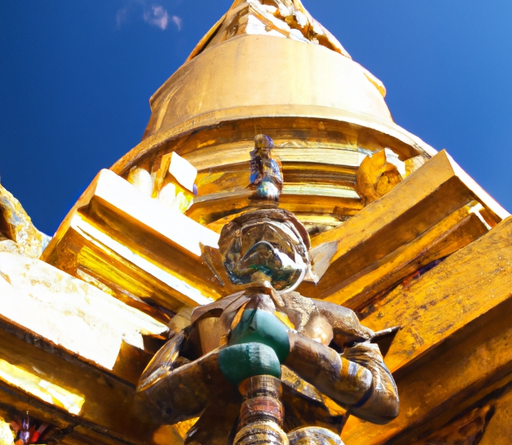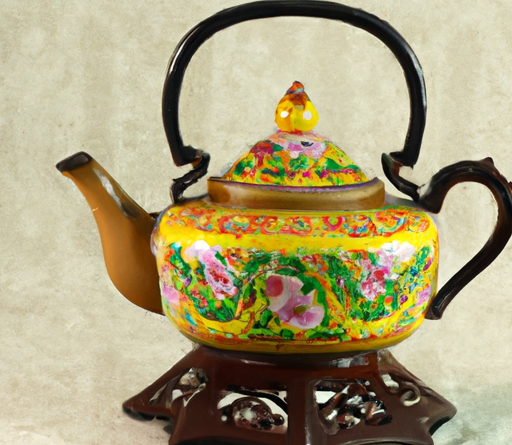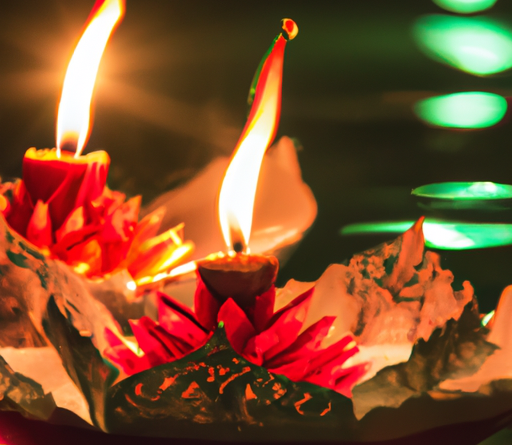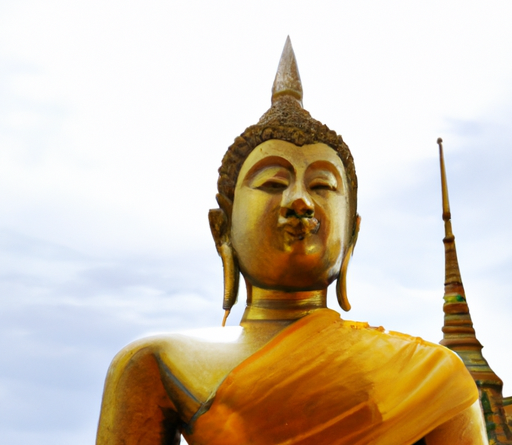
Thailand is a treasure trove of ancient temples that beautifully showcase its rich cultural heritage. From the grandeur of Wat Arun to the tranquility of Wat Phra That Doi Suthep, this ultimate guide will take you on a captivating journey through Thailand’s remarkable ancient temples. Immerse yourself in the vibrant colors, intricate architecture, and profound spirituality of these sacred sites as you uncover the hidden stories and legends that have shaped Thai history. Whether you’re a history enthusiast or simply seeking a serene escape, this guide will help you navigate through the awe-inspiring world of Thailand’s ancient temples with ease and wonder.
Historical Background
Thailand’s ancient temples are a testament to the rich history and deep-rooted spirituality of the country. The origins of these temples can be traced back to ancient times, where Buddhism played a significant role in shaping Thai culture and architecture. Buddhism was introduced to Thailand in the 3rd century BCE, during the reign of King Ashoka in India. As the teachings of Buddhism spread across Southeast Asia, it influenced the architectural styles and religious customs of the region.
The influence of Indian architecture can be seen in the design and construction techniques of Thailand’s ancient temples. Indian architects and artisans brought with them the knowledge of intricate stone carving and craftsmanship, which was reflected in the elaborate ornamentation and intricate details found in Thai temples. The use of architectural elements such as stupas, towers, and decorative motifs became a prominent feature of Thai temple architecture.
Construction techniques and materials have also played a crucial role in shaping the design and longevity of Thailand’s ancient temples. Traditional Thai temples were built using various materials, including wood, brick, and stone. The construction process involved intricate joinery techniques, with wooden beams interlocking without the use of metal nails. The use of durable materials and construction methods has allowed many of these temples to withstand the test of time and retain their historical significance.
Famous Ancient Temples
Thailand is home to numerous ancient temples, each with its own unique charm and historical significance. Some of the most famous temples include:
Wat Phra Kaew
Located within the grounds of the Grand Palace in Bangkok, Wat Phra Kaew is one of the most sacred temples in Thailand. It houses the revered Emerald Buddha, which is the country’s most sacred and venerated Buddha image. The temple’s stunning architecture and intricate details make it a must-visit attraction for tourists and locals alike.
Wat Arun
Situated along the Chao Phraya River in Bangkok, Wat Arun is known for its iconic prang or Khmer-style tower. The temple’s central prang is adorned with colorful porcelain tiles, reflecting the sunlight and creating a mesmerizing sight. Climbing to the top of the prang offers panoramic views of the surrounding area and the river.
Wat Phra That Doi Suthep
Perched atop a mountain in Chiang Mai, Wat Phra That Doi Suthep offers breathtaking views of the city below. The temple is famous for its golden pagoda, which is believed to house a relic of the Buddha. Visitors can reach the temple by climbing the 309 steps of the Naga staircase, which is flanked by intricately carved serpents.
Wat Chedi Luang
Located in the heart of Chiang Mai, Wat Chedi Luang is known for its massive pagoda that once stood at a height of 82 meters. Despite being partially destroyed by an earthquake, the temple remains a significant religious and historical site. It also houses the revered Phra Kaew Khao, a crystal Buddha image.
Wat Phra Singh
Situated in the old city of Chiang Mai, Wat Phra Singh is one of the most revered temples in the region. Its main attraction is the Phra Buddha Sihing, a highly revered Buddha image brought from Sri Lanka. The temple’s intricate decorations and traditional Lanna-style architecture make it a popular destination for both locals and tourists.
Wat Mahathat
Located in Ayutthaya, the ancient capital of Thailand, Wat Mahathat is a historical site that showcases the splendor of the Ayutthaya Kingdom. The temple is known for its iconic Buddha head engulfed by the roots of a banyan tree, creating a captivating and mystical atmosphere.
Wat Pho
Famous for its massive reclining Buddha statue, Wat Pho is one of the oldest and largest temples in Bangkok. The temple is also renowned for its traditional Thai massage school, where visitors can experience the healing benefits of this ancient practice.
Wat Rong Khun
Located in Chiang Rai, Wat Rong Khun, also known as the White Temple, is a modern masterpiece that stands out amongst traditional Thai temples. Its striking white facade, mirrored decorations, and intricate details make it a unique and captivating sight.
Wat Chaiwatthanaram
Situated in Ayutthaya, Wat Chaiwatthanaram is a majestic temple complex that showcases the grandeur of the Ayutthaya period. The temple’s central prang and surrounding pagodas offer a glimpse into the architectural splendor of the past.
Wat Suthat
Located in the heart of Bangkok, Wat Suthat is known for its elegantly carved teakwood panels and numerous Buddha images. The temple’s main attraction is the towering red Giant Swing, which was once used in a religious ceremony to pay homage to the gods.
Unique Architectural Styles
Thailand’s ancient temples are not only known for their historical significance but also for their unique architectural styles. The following are some of the distinctive architectural styles found in Thai temples:
Khmer influence
The Khmer Empire in Cambodia had a significant influence on Thai temple architecture. This can be seen in the use of prangs, or tall towers, that resemble the architecture of Angkor Wat and other Khmer temples. The intricate carvings and decorative motifs of Khmer-inspired temples reflect the grandeur and artistic mastery of the Khmer Empire.
Sukhothai style
The Sukhothai Kingdom marked a significant period in Thai history, and its architectural style is characterized by graceful Buddha images and lotus-shaped pagodas. Wat Mahathat in Sukhothai is a prime example of this architectural style, with its undulating stucco decorations and lotus-bud-shaped chedi.
Lanna style
The Lanna Kingdom in Northern Thailand had its own unique architectural style, known as Lanna architecture. Lanna-style temples feature distinctive sloping multi-tiered roofs, intricate wooden carvings, and elaborate gold and silver decorations. Wat Phra Singh in Chiang Mai exemplifies the beauty and craftsmanship of Lanna architecture.
Rattanakosin style
The Rattanakosin Kingdom, also known as the Bangkok period, introduced a fusion of Thai and European architectural styles. Rattanakosin-style temples are characterized by elaborate gables, painted murals, and the use of imported materials such as Italian marble. Wat Arun is a prime example of this architectural style, with its mixture of Khmer and Rattanakosin influences.
Ayutthaya style
Ayutthaya, the ancient capital of Thailand, has its own distinctive architectural style. Ayutthaya-style temples often feature multiple prangs and elaborate stucco decorations. Wat Chaiwatthanaram in Ayutthaya captures the grandeur and elegance of this architectural style, with its towering central prang and surrounding pagodas.
Sacred Symbols and Objects
Thailand’s ancient temples are filled with sacred symbols and objects that hold deep religious and cultural significance. Understanding these symbols and their meanings provides a deeper appreciation of the temples. Some of the most common symbols and objects found in Thai temples include:
Ubosot: Ordination Hall
The ubosot is the main sacred hall of a Thai temple, where ordination ceremonies take place. It is typically the most revered and consecrated area of the temple, reserved for ceremonies and important religious rituals.
Chedi: Stupa
The chedi, also known as a stupa, is a dome-shaped structure that represents the enlightened mind of the Buddha. It is a symbol of peace, enlightenment, and the path to liberation. Chedis can vary in size and design, from simple structures to elaborate and ornate monuments.
Prang: Khmer-style tower
Prangs are tall, tower-like structures influenced by Khmer architecture. They are often adorned with intricate carvings and serve as a focal point of the temple complex. Prangs symbolize the sacred mountain, representing the connection between earth and the divine.
Bot: Main sermon hall
The bot is the main sermon hall of a Thai temple and is where the community gathers for religious ceremonies and teachings. It is typically adorned with intricate decorations and serves as a place of meditation and spiritual development.
Viharn: Assembly hall
The viharn is an assembly hall within the temple complex where religious rituals and gatherings take place. It serves as a place for worship and often houses important Buddha images and relics.
Buddha images and relics
Buddha images are found throughout Thai temples, representing the enlightened teachings of the Buddha. These images come in various postures and poses, each conveying different meanings. Relics, such as bone fragments or sacred objects, are also displayed and venerated in some temples as objects of worship.
Religious Customs and Traditions
Thailand’s temples are not only sacred places of worship but also centers where religious customs and traditions are observed. Some of the key customs and traditions include:
Merit-making rituals
Merit-making is an integral part of Thai Buddhist culture, and temples provide a space for individuals to accumulate merits through acts of generosity, kindness, and moral conduct. Offering alms to monks, making donations to the temple, and participating in rituals and ceremonies are common ways for individuals to earn merit.
Offerings and prayers
Visitors to Thai temples often make offerings, such as flowers, incense, candles, and gold leaf, as a sign of respect and veneration. Prayers are also an essential part of temple visits, with individuals expressing gratitude and seeking blessings from the Buddha and other revered figures.
Monkhood and ordination
Temples play a crucial role in the ordination of monks, who are highly respected in Thai society. Monastic life provides spiritual guidance and serves as a path to enlightenment. Temples often hold ordination ceremonies for young men seeking to enter the monkhood.
Festivals and celebrations
Thailand’s temples are vibrant spaces during festivals and celebrations. Events such as Songkran (Thai New Year), Loy Krathong (Festival of Lights), and Visakha Bucha (commemoration of the Buddha’s birth, enlightenment, and death) are observed with processions, temple fairs, and special religious ceremonies.
Significance of Ancient Temples
Thailand’s ancient temples hold immense significance in Thai society, both spiritually and culturally. Some of the key roles and contributions of these temples include:
Role in Thai society
Temples are not only places of worship but also serve as community centers where individuals come together to learn, meditate, and seek spiritual guidance. They provide a sense of belonging and play a vital role in maintaining social harmony and cultural traditions.
Spiritual and cultural hubs
Thai temples are spiritual sanctuaries, where individuals can connect with their inner selves and find solace in the teachings of the Buddha. They are also cultural hubs, preserving traditional art forms, music, and dance through performances and exhibitions.
Preserving historical and artistic heritage
Ancient temples are living relics of Thailand’s history and artistic heritage. They showcase the architectural brilliance, craftsmanship, and artistic techniques of past generations. By preserving and restoring these temples, Thailand ensures the continuation of its rich cultural legacy.
Tourism and economic impact
Thailand’s ancient temples attract millions of tourists each year, contributing to the country’s economy. These visitors bring revenue to local communities, fostering economic development and supporting local businesses. The tourism industry plays a crucial role in the conservation and maintenance of these temples.
Must-Visit Temple Cities
Thailand is home to several temple cities that offer a wide range of ancient temples to explore. Some of the must-visit temple cities include:
Bangkok
As the capital city of Thailand, Bangkok is renowned for its stunning temples. The city is home to the iconic Wat Phra Kaew and Wat Arun, as well as many other historic temples scattered throughout its vibrant neighborhoods.
Chiang Mai
Chiang Mai, the cultural capital of Northern Thailand, is famous for its ancient temples and rich Lanna heritage. Wat Phra Singh and Wat Chedi Luang are must-visit temples that showcase the beauty of Lanna architecture.
Ayutthaya
Ayutthaya, the ancient capital of Thailand, is a UNESCO World Heritage Site and home to numerous temple ruins. Visiting Ayutthaya offers a glimpse into the grandeur of the Ayutthaya Kingdom and its architectural splendor.
Sukhothai
Sukhothai, another UNESCO World Heritage Site, is known for its well-preserved temples from the Sukhothai period. The Historical Park in Sukhothai is a treasure trove of ancient temples, displaying the grace and elegance of this era.
Udon Thani
Located in northeastern Thailand, Udon Thani is home to the beautiful Red Lotus Sea and the remarkable Wat Pa Phu Kon, a temple complex nestled in the mountains. It offers a serene and picturesque retreat away from the bustling city.
Temple Etiquette and Dress Code
When visiting Thailand’s temples, it is important to respect the religious customs and adhere to a proper dress code. Some guidelines to follow include:
Appropriate clothing
Visitors should dress modestly when entering temples, covering their shoulders and knees. Loose-fitting clothing made of lightweight fabric is recommended, as Thailand has a tropical climate.
Shoes and footwear
Shoes must be removed before entering the temple grounds as a sign of respect. Many temples provide designated areas or shoe racks for visitors to store their footwear.
Behavior and conduct
Visitors should maintain a respectful and quiet demeanor while inside the temple, refraining from loud conversations or disruptive behavior. Taking photographs is generally allowed but be aware of any signs or restrictions.
Respecting religious customs
When entering the temple, visitors should observe the customs and rituals of the Buddhist faith. This includes offering alms to monks, avoiding pointing feet towards Buddha images, and showing reverence during ceremonies and rituals.
Popular Temple Activities
Thailand’s temples offer various activities for visitors to immerse themselves in the spiritual and cultural experience. Some popular temple activities include:
Meditation and mindfulness retreats
Many temples in Thailand offer meditation and mindfulness retreats, allowing visitors to learn and practice these ancient techniques in a serene and peaceful environment. These retreats provide an opportunity for self-reflection and personal growth.
Monk chats and temple stays
Some temples offer the opportunity to engage in monk chats, where visitors can have conversations with monks, learn about their way of life, and gain insights into Buddhist philosophy. Temple stays provide a deeper immersion into temple life, with opportunities to participate in daily rituals and ceremonies.
Cultural performances and ceremonies
Thai temples often showcase cultural performances, including traditional dances, music, and ceremonies. These performances offer a glimpse into the vibrant cultural heritage of Thailand and provide an entertaining and educational experience for visitors.
Traditional Thai massage
Many temples have traditional Thai massage schools within their premises, offering visitors the chance to experience this ancient healing practice. Thai massage combines elements of yoga, acupressure, and stretching to promote relaxation and well-being.
Preservation Efforts and Restoration Projects
Preserving Thailand’s ancient temples is essential to maintain their historical and cultural significance for future generations. Various initiatives and restoration projects have been undertaken to ensure their long-term survival. Some key aspects of preservation efforts include:
National and international initiatives
The Thai government, along with international organizations and local communities, has implemented conservation programs to protect and restore ancient temples. Partnerships with UNESCO and other stakeholders have played a crucial role in raising awareness and funding for preservation projects.
Challenges and obstacles
Preserving ancient temples poses many challenges, including natural disasters, climate change, and urban development. These factors can damage or destroy historical sites, requiring continuous monitoring and preventive measures to mitigate potential risks.
Case study: Wat Mahathat restoration
One notable restoration project is the ongoing restoration of Wat Mahathat in Ayutthaya. This temple was severely affected by natural and man-made disasters, leading to its partial collapse. The restoration efforts have involved extensive research, craftsmanship, and community involvement to restore the temple to its former glory.
Community involvement
Preservation efforts are often carried out in collaboration with local communities, who are actively engaged in the restoration and maintenance of temples. Community participation ensures that the restoration projects align with local cultural and artistic traditions, and creates a sense of ownership and pride among community members.
In conclusion, Thailand’s ancient temples are an integral part of the country’s history, culture, and spirituality. With their unique architectural styles, sacred symbols, and deep-rooted traditions, these temples provide a glimpse into Thailand’s rich past and continue to be important centers of worship, community, and cultural heritage. Visitors to Thailand are encouraged to explore these remarkable temples, respecting the customs and traditions while appreciating the beauty and significance they hold.
